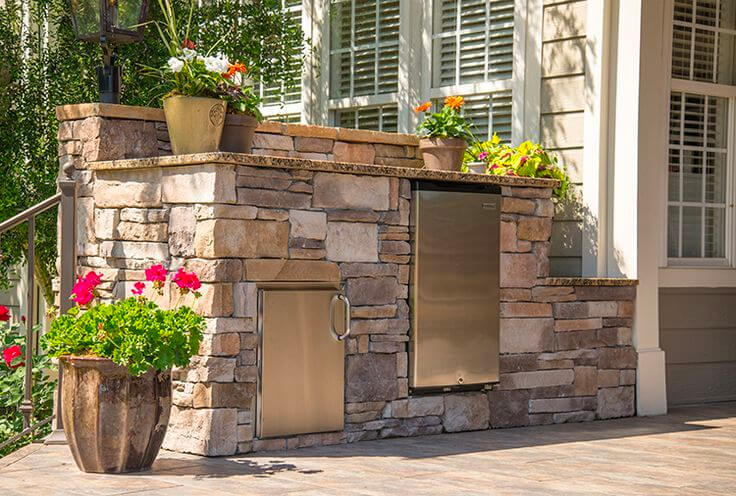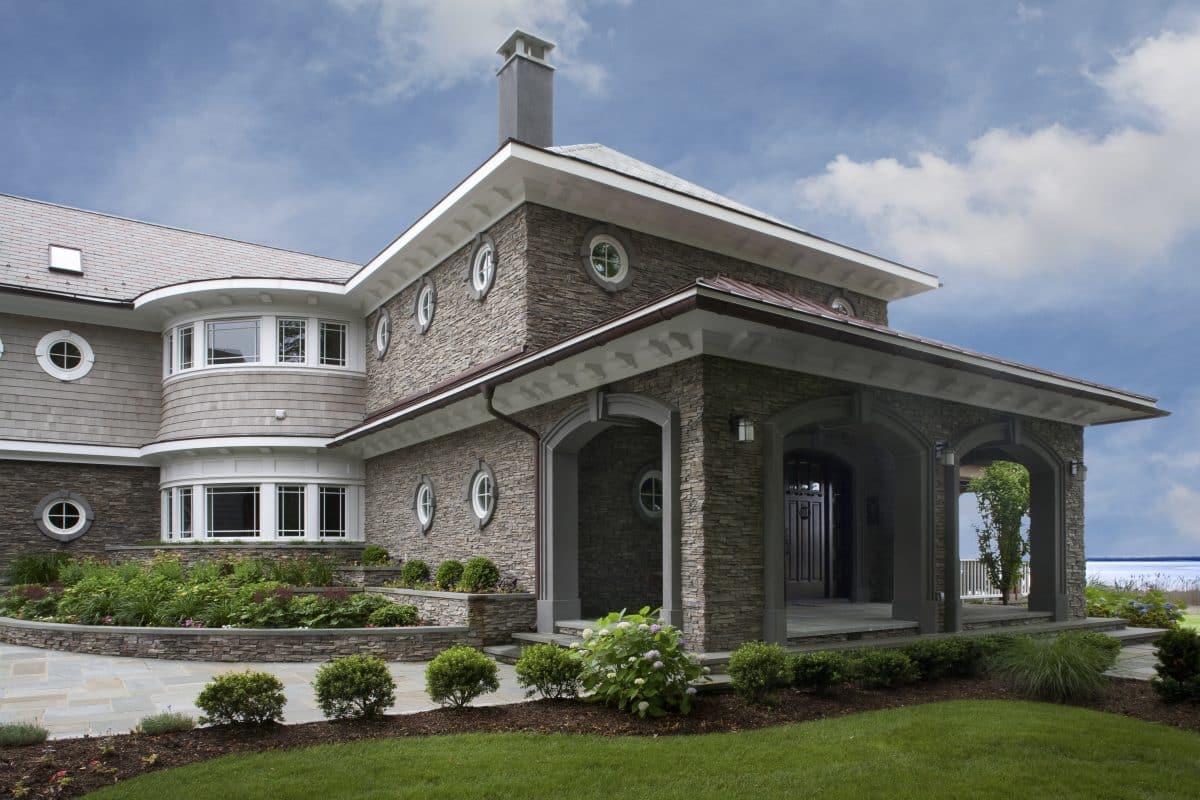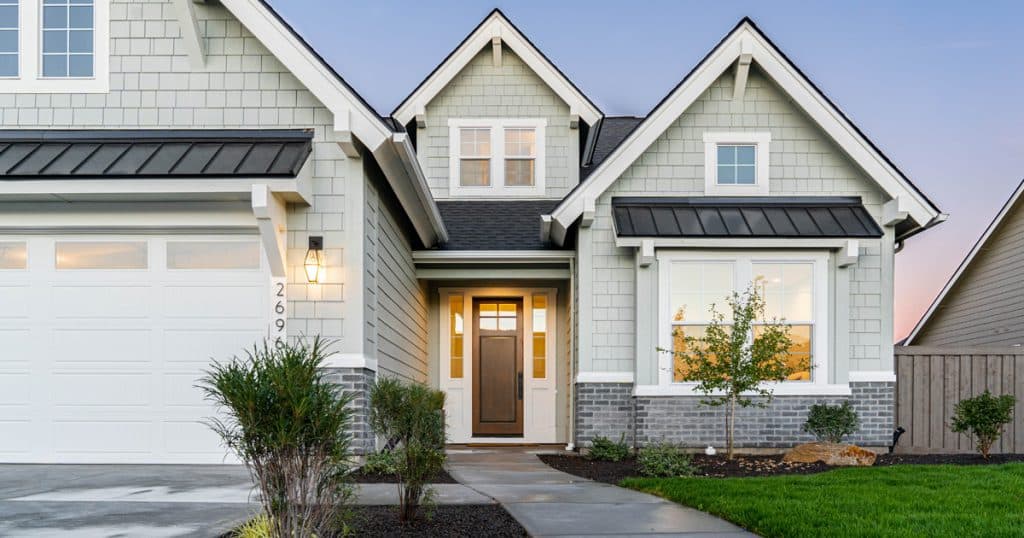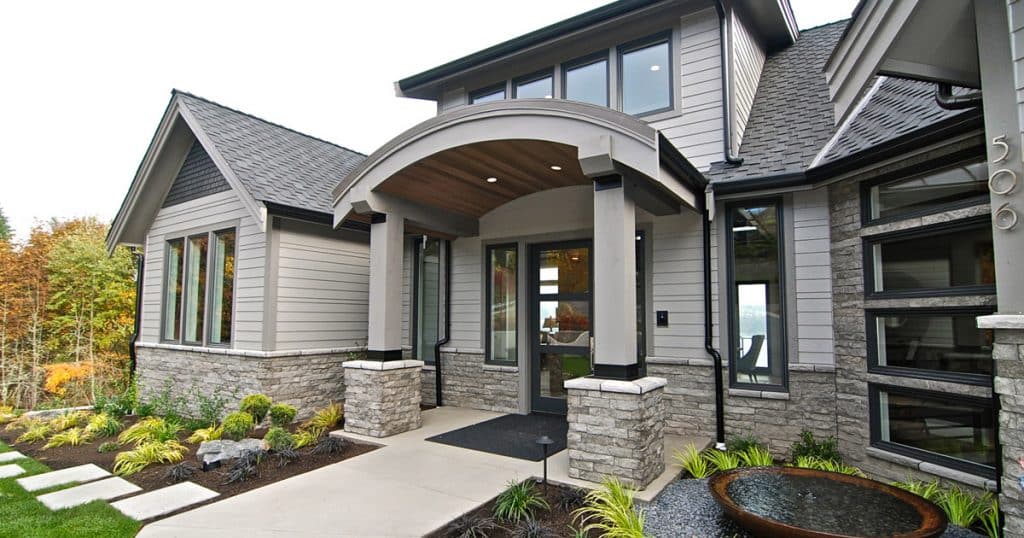
How to Properly Care and Maintain Installed Manufactured Stone Veneer
Manufactured stone veneer (MSV) is a popular choice for both interior and exterior applications, offering the timeless look of natural stone while being more lightweight and cost-effective. Whether you’re a mason professional or a homeowner, proper care and maintenance are essential for preserving the beauty and durability of the installed veneer.

General Care Guidelines for MSV
Regular Inspection
The first step in maintaining MSV is conducting regular inspections. Perform a visual check every few months or at least once per season to ensure there are no obvious cracks, loose pieces, or other signs of wear. This is especially important for exterior applications exposed to the elements.
Key Areas to Inspect:
Weep Holes & Drainage: Make sure any weep holes or drainage systems are clear of debris to prevent water buildup behind the veneer, which could lead to mold, mildew, or structural issues.
Mortar Joints: Look for any gaps or cracks in the mortar, which could allow water infiltration or compromise the veneer’s stability.
Cracks or Chips: Examine individual stone pieces for cracks, chips, or discoloration.

Cleaning the Veneer
Manufactured stone veneer can accumulate dirt, dust, and environmental debris over time. While it doesn’t require intensive cleaning like some other surfaces, periodic cleaning helps maintain its aesthetic appeal.
Steps for Cleaning:
- Gentle Wash: Use a soft-bristle brush and mild soap solution (preferably a pH-balanced cleaner) to scrub the surface. Avoid harsh chemicals or power washing, as they can damage the finish or grout joints.
- Rinse Thoroughly: Always rinse with clean water after cleaning to remove any soap residue.
- Avoid Abrasive Tools: Steel wool or wire brushes can scratch the surface, so use non-abrasive materials for scrubbing.
- Stain Removal: For stubborn stains, you can use a stone-safe cleaner or a mixture of baking soda and water but always test in an inconspicuous area first.

Proper Moisture Management
Water is one of the primary culprits when it comes to damage to stone veneers. While MSV is designed to handle some exposure to moisture, it’s important to manage water infiltration properly.
Seal the Surface
Applying a high-quality water repellant or penetrating sealer can help protect the veneer from moisture damage. These sealers reduce water absorption and prevent staining, while still allowing the stone to “breathe.” A sealer should be applied every 2-3 years, depending on the local climate and the type of exposure the stone experiences.
Check Flashing and Drains
Ensure that proper flashing is in place to direct water away from the stone veneer, especially around windows, doors, and joints. If water is allowed to collect behind the veneer, it can cause structural damage or create conditions for mold and mildew growth.

Repairs and Touch-Ups
Over time, minor damage to the stone veneer can occur, whether from weathering, accidental impacts, or general wear. The good news is that MSV is relatively easy to repair.
Fixing Cracks and Chips:
- Small Chips: For small chips, a simple touch-up with matching grout or mortar may suffice. Use a grout filler that matches the color and texture of the stone.
- Larger Cracks: For larger cracks or damaged stones, you may need to replace the individual stone veneer. Carefully remove the damaged stone, clean the area, and install a new piece, ensuring the mortar is properly applied.
Repointing Mortar Joints:
If mortar joints start to deteriorate or crack, it’s essential to repoint them promptly. This helps maintain the structural integrity and aesthetic of the veneer. To repoint, scrape out the old mortar, clean the joints, and apply fresh mortar. Be sure to match the color and texture of the original mortar for a seamless look.

Protection During Extreme Weather
In regions with harsh winters or extreme heat, it’s important to take additional precautions to protect the stone veneer.
Winter Care:
- Ice and Snow: Avoid using deicing chemicals (such as salt) on or near your stone veneer. These chemicals can cause surface damage over time.
- Freeze-Thaw Cycles: Water that infiltrates the stone and freezes can cause it to crack or pop loose. Make sure the surface is sealed properly and ensure that the veneer has good drainage to prevent water buildup.
Summer Care:
Heat Exposure: While manufactured stone is quite resilient to heat, prolonged exposure to high temperatures can cause surface discoloration or fading. Use shade structures or awnings if the stone is exposed to intense sunlight for extended periods.

Final Thoughts for Masons and Homeowners
Maintaining manufactured stone veneer isn’t complicated, but it requires a consistent effort to inspect, clean, and repair as needed. Regular inspection and maintenance not only enhance the aesthetic value but also extend the lifespan of the veneer, making it a wise investment for any property.
For masons, ensuring that the installation is done correctly in the first place, with proper flashing, drainage, and joint construction, is key to minimizing future maintenance. Homeowners, meanwhile, can rest easy knowing that with just a little care, their stone veneer will continue to look as beautiful as the day it was installed.











































